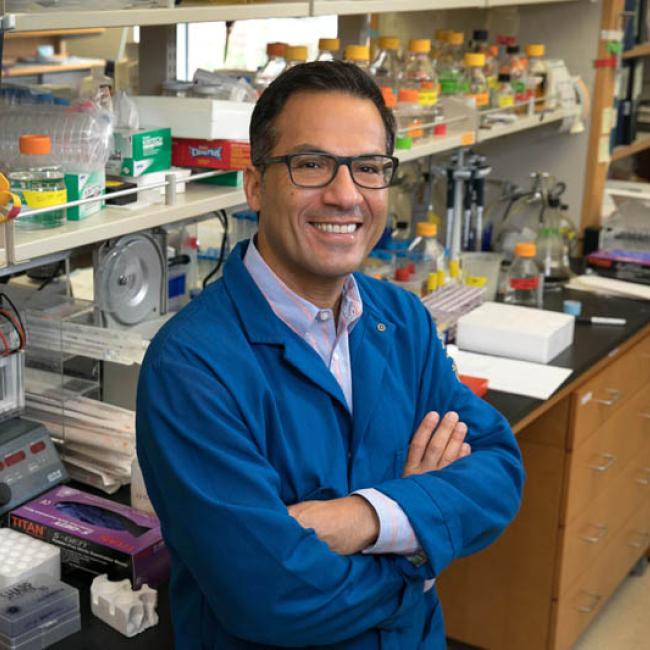
Scientists pinpoint surprising new function for histones
FINDINGS
UCLA scientists have identified a new function for histones, the spool-shaped proteins that regulate gene expression and help pack long strands of DNA into cells. The resulting matrix, called chromatin, provides the structural foundation for chromosomes.
In a surprising finding that received more than 1,400 “likes” and more than 600 shares on Twitter within the first several days after the study was published, the researchers discovered that histones also function as enzymes that convert copper into a form that can be used by the body’s cells.
Scientists had assumed that copper spontaneously converted into a usable form once inside the cell. Instead, the UCLA team found that histones facilitate cells’ use of copper in the presence of oxygen, which normally hinders copper utilization. This, in turn, allows copper to reach its cellular destinations and protein targets, including proteins in mitochondria, cells’ power source. Conversely, the disruption of enzyme activity in histones impairs many cellular processes, such as mitochondrial respiration, which depends on copper to function.
METHOD
Combining techniques from biochemistry and molecular biology, the scientists used baker’s yeast as a model to show that histones bind to copper and convert it to a usable form.
IMPACT
The study suggests that the presence of histones in an ancestor of eukaryotes — cells that contain a nucleus — played an essential role some 2 billion years ago in the evolution of history’s first eukaryotic cell, which gave rise to a vast diversity of humans and other animals, plants and fungi.
Given the importance of chromatin and copper to human health, the discovery also could provide insights into how disease develops in cancer, mitochondrial diseases, neurodegenerative disorders and a variety of other conditions.
AUTHORS
The study’s lead author is Siavash Kurdistani, chair of biological chemistry at the David Geffen School of Medicine at UCLA. Co-first authors are Narsis Attar (now at Massachusetts General Hospital), Oscar Campos and Maria Vogelauer.
JOURNAL
The study and a related commentary were published in Science.
Notes
The eight-year study was supported by grants from the W. M. Keck Foundation, the National Institutes of Health, the Whitcome Fellowship program and the Amgen Scholars Program.
